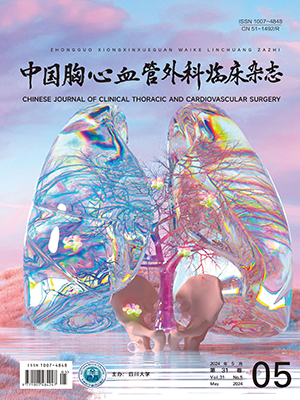| 1. |
Topkara VK, Cheema FH, Kesavaramanujam S, et al. Coronary artery bypass grafting in patients with low ejection fraction. Circulation, 2005, 112(9 Suppl): I344-I350.
|
| 2. |
Moreyra AE, Deng Y, Wilson AC, et al. Incidence and trends of heart failure admissions after coronary artery bypass grafting surgery. Eur J Heart Fail, 2013, 15(1): 46-53.
|
| 3. |
Petrie MC, Jhund PS, She L, et al. Ten-year outcomes after coronary artery bypass grafting according to age in patients with heart failure and left ventricular systolic dysfunction: An analysis of the extended follow-up of the STICH Trial (Surgical Treatment for Ischemic Heart Failure). Circulation, 2016, 134(18): 1314-1324.
|
| 4. |
Pieri M, Belletti A, Monaco F, et al. Outcome of cardiac surgery in patients with low preoperative ejection fraction. BMC Anesthesiol, 2016, 16(1): 97.
|
| 5. |
Velazquez EJ, Lee KL, Jones RH, et al. Coronary-artery bypass surgery in patients with ischemic cardiomyopathy. N Engl J Med, 2016, 374(16): 1511-1520.
|
| 6. |
Michler RE, Rouleau JL, Al-Khalidi HR, et al. Insights from the STICH trial: change in left ventricular size after coronary artery bypass grafting with and without surgical ventricular reconstruction. J Thorac Cardiovasc Surg, 2013, 146(5): 1139-1145.
|
| 7. |
Oh JK, Velazquez EJ, Menicanti L, et al. Influence of baseline left ventricular function on the clinical outcome of surgical ventricular reconstruction in patients with ischaemic cardiomyopathy. Eur Heart J, 2013, 34(1): 39-47.
|
| 8. |
Wrobel K, Stevens SR, Jones RH, et al. Influence of baseline characteristics, operative conduct, and postoperative course on 30-day outcomes of coronary artery bypass grafting among patients with left ventricular dysfunction: Results from the Surgical Treatment for Ischemic Heart Failure (STICH) Trial. Circulation, 2015, 132(8): 720-730.
|
| 9. |
Li S, Gong W, Qi Q, et al. Outcomes of off-pump versus on-pump coronary artery bypass graft surgery in patients with severely dilated left ventricle. Ann Transl Med, 2016, 4(18): 340.
|
| 10. |
Bonow RO, Castelvecchio S, Panza JA, et al. Severity of remodeling, myocardial viability, and survival in ischemic LV dysfunction after surgical revascularization. JACC Cardiovasc Imaging, 2015, 8(10): 1121-1129.
|
| 11. |
Gatti G, Maschietto L, Dell'Angela L, et al. Predictors of immediate and long-term outcomes of coronary bypass surgery in patients with left ventricular dysfunction. Heart Vessels, 2016, 31(7): 1045-1055.
|
| 12. |
Saha KK, Kaushal RP, Kumar A, et al. Intraaortic balloon pump boon for off-pump coronary artery bypass grafting. Asian Cardiovasc Thorac Ann, 2015, 23(3): 267-270.
|




